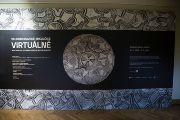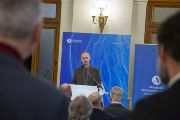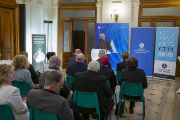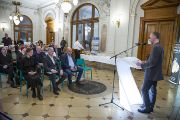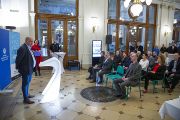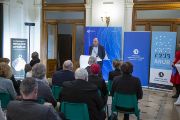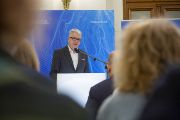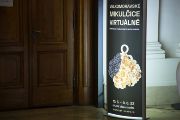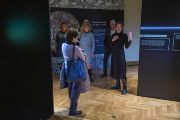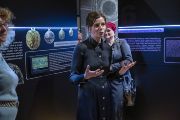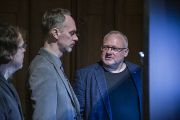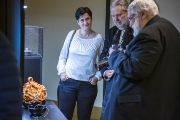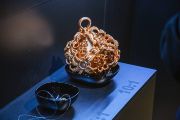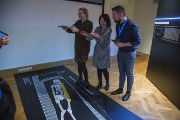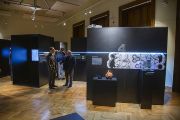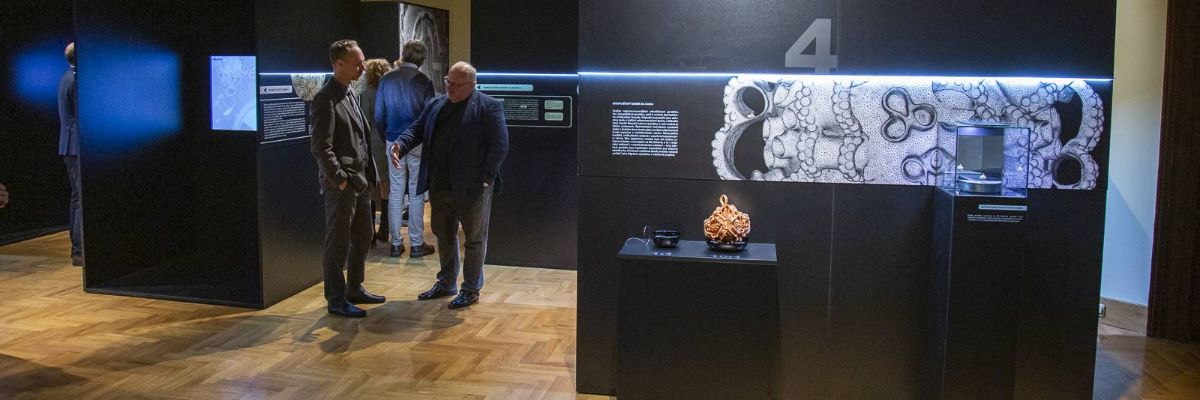
The exhibition Great Moravian Mikulčice Virtually takes visitors into the past
10. 03. 2023
Animations of jewels, 3D virtual models of long-gone architecture, and reconstructions of what the stronghold of Valy near Mikulčice might have looked like more than one thousand years ago. The virtual aspect of the Great Moravian Mikulčice Virtually exhibition is two-fold – it draws attention to the visually appealing format and also refers to the importance of modern technology for contemporary archaeology. Visitors will have the chance to examine the scientific findings and otherwise inaccessible artefacts up close. A Czech-English exhibition catalogue, published by the Institute of Archaeology of the CAS in Brno, is also available.
The archaeological findings of the former stronghold of Valy near Mikulčice prove how important a site it was in the ninth century. The power and religious centre there was a major contributor to the formation of Czech culture. Today, we can find here one of the most important archaeological sites in Central Europe. The research, which is one of the most extensive of its kind in Europe, has been carried out by the Institute of Archaeology of the CAS in Brno for almost seventy years.
The exhibition was opened on 9 March 2023 by Ondřej Beránek, Vice-President of the Czech Academy of Sciences. “The exhibition’s title and implementation is a great example of how science is intertwined with modern times and how we can use modern tools to understand history. It is also proof that technology has a firm and now irreplaceable place even in the humanities, with which the public may not have primarily associated it,” Beránek emphasised the importance of modern methods in research.
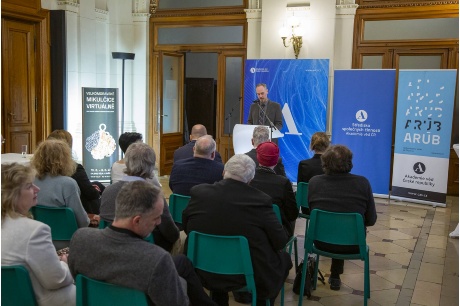
The exhibition was opened by Ondřej Beránek, Vice-President of the CAS.
Traditional findings in a modern format
“Long-term systematic research has proven to be a methodological problem – it is not easy to process source material using traditional methods. We were therefore looking for new methods that would make it accessible to the public,” said Lumír Poláček, one of the authors of the exhibition. He went on to explain the “winning” procedure that was utilised: “3D modelling based on multi-image photogrammetry – a method that combines hundreds of images of a single object, artefact, or contexts from different angles to compose a spatial model – has definitely proven its worth.”
The method allows for the permanent preservation of accurate data that can then be further used in research and popularisation efforts. This has given rise to faithful virtual copies that can be used by researchers to learn more about their findings, as a tool for documentation and conservation, and to communicate research results to the public.
“The exhibition is the culmination of a broadly conceived research project, which I perceive as the leitmotif of our future plans – to carry out research in a way that presents the results to the public in an attractive way,” explained Balázs Komoróczy, Director of the Brno Institute of Archaeology of the CAS. “The exhibition is a test of how we can present traditional findings in a modern language so that it remains part of a living culture,” he added.
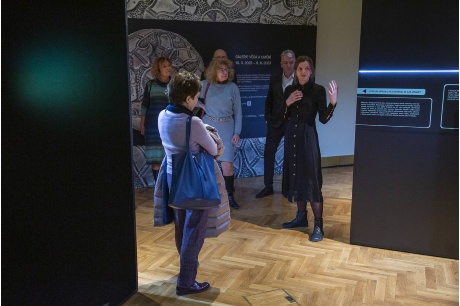
The exhibition opening included a guided tour with its co-author, Šárka Krupičková.
All angles of the spherical hollow button
The “highlight” of the exhibition is a golden two-layered spherical hollow button – an ornament typical for Great Moravia in the ninth and tenth centuries. The authors of the exhibition have used the artefact to showcase the range of technical possibilities of 3D modelling. Visitors can examine it in detail in two types of projections – a large-scale wall projection and a holographic projection, which projects the object into space. Along with that, a 1:1 scale copy of the artefact is on view in a classic display case, with the craftsmanship standing out in another copy of a ten-time magnification.
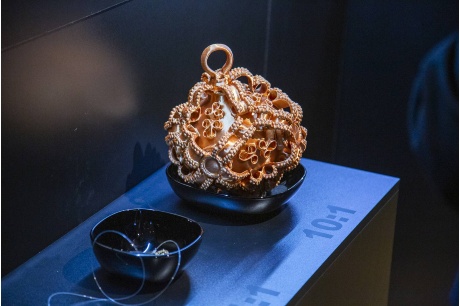
The craftsmanship and intricate details stand out in the ten-time magnified copy of the spherical hollow button (gombík).
Some history fans have already had a chance to see the exhibition at the “crime scene” itself, i.e., at the research base of the Brno Institute of Archaeology of the CAS in Mikulčice-Trapíkov. The Institute has also published a Czech-English exhibition catalogue, which is free to download. In the spirit of the exhibition, it contains QR codes which provide readers with an even more detailed experience, displaying animations of objects and artefacts on their mobile phones.
The Great Moravian Mikulčice Virtually exhibition can be visited in person at the Science and Art Gallery at the CAS headquarters on Národní Street in Prague until 9 June 2023. Admission is free and the gallery is open on weekdays from 10 AM to 6 PM. Non-Czech-speaking visitors can borrow an English printed guide on the spot to supplement their experience.
Prepared by: Zuzana Dupalová, Division of External Relations, CAO of the CAS
Photo: Josef Landergott, Divize vnějších vztahů SSČ AV ČR
 The text and photos are released for use under the Creative Commons licence.
The text and photos are released for use under the Creative Commons licence.
Read also
- A trapped state: The pandemic impact on public attitudes, trust, and behavior
- Aerial archaeology: Tracing the footsteps of our ancestors from the sky
- Archaeologists uncover ancient finds along Prague Ring Road
- Our microbiome largely depends on what we eat, says microbiologist Michal Kraus
- The ABCs of writing: Why did its invention mark a turning point for humankind?
- We learn, remember, forget… What can memory actually do? And can we outsmart it?
- New Center for Electron Microscopy in Brno opens its doors to global science
- The hidden lives of waste: What can we learn from waste workers and pickers?
- A unique lab is hidden right beneath Prague’s Vítkov Hill
- Renewables are a strategic investment in European security, scientists say
The Czech Academy of Sciences (the CAS)
The mission of the CAS
The primary mission of the CAS is to conduct research in a broad spectrum of natural, technical and social sciences as well as humanities. This research aims to advance progress of scientific knowledge at the international level, considering, however, the specific needs of the Czech society and the national culture.
President of the CAS
Prof. Eva Zažímalová has started her second term of office in May 2021. She is a respected scientist, and a Professor of Plant Anatomy and Physiology.
She is also a part of GCSA of the EU.
